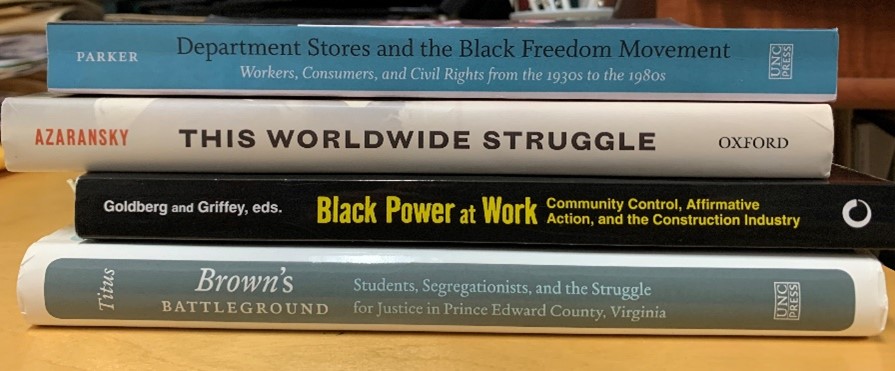
In 1924, AFSC’s Board met to discuss the future of the organization. After concluding two major relief missions (the first in France in 1917 and the second in Germany in 1919), the question put before the Board was: Should AFSC continue as an organization or disband leaving future work to the individuals Quaker meetings across the country?
AFSC Chairman Rufus Jones made clear his belief that there were still many tasks to which Quakers were particularly suited. Chief among them would be cultivating “better interracial relationships.” In his book “Quaker Brotherhood,” author Allan Austin states wrote “Jones’ emphasis on interracial problems reflected a growing concern with race relations within the AFSC that helped to convince Quakers of the continued need for their service organization.”
Little progress was made to address racial tension and economic disparity for African Americans in the first half of the 20th century. But the civil rights movement of the 1950s, ’60s, and ’70s afforded AFSC an opportunity to support in a more meaningful way. Improving access to fair housing, employment, and education were areas in which AFSC was able to bring its experience and resources to the table.
In the four books listed below, AFSC does not take center stage. In keeping with Quaker principles, staff work quietly in the background, participating as a partner and a supporter in advancing the struggle against racism, promoting the means of equal opportunity, and helping to advance the causes of African Americans during the civil rights era.
"Brown’s Battleground: Students, Segregationist, and the Struggle for Justice in Prince Edward County, Virginia" by Jill Ogline Titus
“Brown’s Battleground” tells the story of the struggle for equal education in Prince Edward County, Virginia. After the historic Brown vs. Board of Education decision, Prince Edward County shut down its public schools instead of integrating them. AFSC provided financial and material support. That included helping Black students transfer to schools in northern states so they could complete their education.
"Department Stores and the Black Freedom Movement: Workers, Consumers, and Civil Rights from the 1930s to the 1980s" by Traci Parker
The effort to obtain equal employment in department stores is an often overlooked aspect of the Civil Rights movement. In Philadelphia, Boston, Chicago, Raleigh, and other major cities throughout the U.S., African American groups engaged in negotiations with store owners and management. AFSC supported these efforts. Author Traci Parker also explores how more effective strategies such as boycotts, protests, and legal challenges were critical to obtain more lasting change for African Americans in the workforce.
"Black Power at Work: Community Control, Affirmative Action, and the Construction Industry." Edited by David Goldberg and Trevor Griffey
This book is a collection of articles chronicling how local activists and direct-action campaigns in cities across the U.S contributed to the opening of the construction industry to African American construction workers.
"This Worldwide Struggle: Religion and the International Roots of the Civil Rights Movement" by Sarah Azaransky
”This Worldwide Struggles” views the civil rights movement through a global lens. Professor Azaransky examines the movements for independence in India and Ghana and how they helped influence leaders such as the Rev. Dr. Martin Luther King Jr. and Bayard Rustin. Once again, Quakers and the AFSC show up in a supportive role. In 1959, for example, AFSC funded Dr. King and Coretta Scott King’s trip to India to study the Ghanaian method of nonviolence.